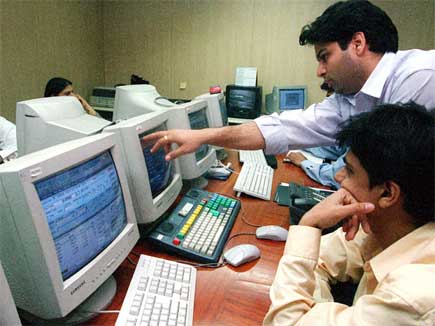Even as the markets remain unpredictable after the unprecedented downgrade of the US’ long-term debt rating by Standard & Poors (S&P), a large section of the analyst fraternity now appears to be coming around to the view that, for the Indian markets, the global slowdown may not be a throwback to the testing times witnessed in 2008.
And the reasons are many.
Ironically, muted foreign inflows are being seen as one of the major reasons why the markets may not take that big a hit this time even if slowdown worries escalate globally. A recent note by Royal Bank of Scotland’s (RBS) Parul J Saini suggests that these lower-than-earlier foreign institutional investor (FII) flows could actually serve to ensure that India does not suffer from a big jolt in the markets in 2011.
Says the RBS analysis: “One reason for the significant underperformance of Indian equities in 2008 (MSCI India underperformed MSCI Asia ex-Japan by 28 percent from 4 Jan 2008 through 26 December 2008) was a reversal in FII equity flows. Specifically, FII net outflows totaled $13.1billion in 2008, more than offsetting the $12.8billion of inflows in the second half of 2007. However, this time around FII inflows have only totalled $2.2 billion for the first seven months of 2011.”
[caption id=“attachment_62718” align=“alignleft” width=“435” caption=“A recent note by Royal Bank of Scotland suggests that lower-than-earlier foreign institutional investor flows could actually serve to ensure that India does not suffer from a big jolt in the markets in 2011. Reuters”]
 [/caption]
[/caption]
The report adds: “The bulk of these YTD (year-to-date) inflows have come in late June/early July (inflows of $2.8bn for 23 June through 31 July). As such, there is the risk of a reversal of these inflows, but the magnitude should be a lot lesser than what we saw in 2008. Net FII outflows have totalled $220 million for the first four days of August.”
Analysts have also begun debating whether the rate hardening cycle by the Reserve Bank of India (RBI) may just witness a pause when the Mint Road bosses sit down to take stock of the economy in the next quarter. While the last time round, RBI governor Duvvuri Subbarao had hardened his stance and announced a 50 basis points hike, the global downturn may, some analysts hope, lead to a rethink on that front. Particularly since global commodity prices are also expected to soften a bit on the back of the downturn.
Growth, and not inflation, could top the RBI’s priority list the next time, it is felt, though the jury could well be out on that after the July 2011 inflation figure showed inflation at well over 9 percent for eight consecutive months despite the RBI rate hikes.
Significantly, the relative underperformance of Indian equities is also being seen as a factor why the Indian markets will be better cushioned in 2011. Says RBS: “In addition to the significant flow reversal, the significant underperformance by Indian equities in 2008 was linked to overvaluation and outperformance in the second half of 2007 - both these factors are significantly more supportive now.”
While in 2007-08, the MSCI India index outperformed the MSCI Asia (ex-Japan) index by as much as 30 percent between 29 June 2007 and 4 January 2008, this time the MSCI India index has actually underperformed the MSCI Asia (ex-Japan) by 12 percent on a year-to-date basis up until 4 August 2011. The MSCI India was trading at a 12-month forward price-equity ratio (PE) of 23.6 times on 4 January 2008, a hefty 53 percent premium to Asia, ex-Japan. By contrast, the current forward PE is only13.7 times, a 22 percent premium over Asia ex-Japan.
S&P has, meanwhile, just announced that there is no immediate threat of a downgrade for India’s sovereign rating, though loose fiscal policies and the slower pace of economic reform may actually dent confidence in the medium term. Analysts are betting that the government may now press on the accelerator as far as economic reform is concerned, to try and offset the negative impact of global factors.
How far the embattled UPA government is able to do that will decide much of what follows for the markets in the coming months.
Sourav Majumdar has been a financial journalist for over 18 years. He has worked with leading business newspapers and covered the corporate sector and financial markets. He is based in Mumbai.
)